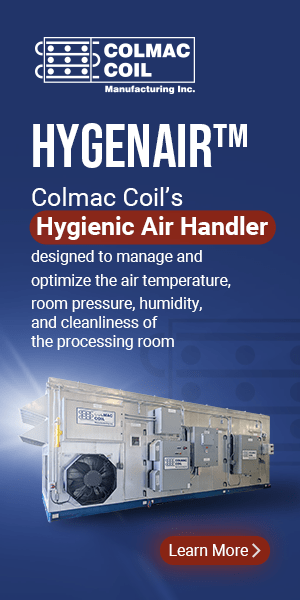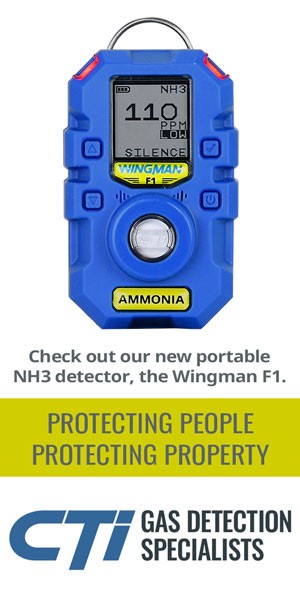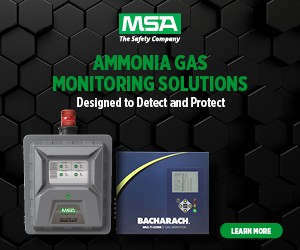Industry Groups to Launch OSHA Training on Ammonia Refrigeration
“In some situations, field inspectors coming into ammonia refrigerated facilities may have more familiarity with chemical plants and refineries. The RAGAGEP and technology used in ammonia refrigeration facilities are quite different than the RAGAGEP applicable in other industries. This course is specifically structured to provide the field inspectors with a better understanding of ammonia refrigeration technology and the RAGAGEP that is applicable in our industry,” said Doug Reindl, a professor at the University of Wisconsin and a member of the IIAR board.
Don Stroud, chair of the IIAR government affairs committee and senior refrigeration engineer for Stellar, said it is to the industry’s benefit to educate OSHA field inspectors so they aren’t citing IIAR members for items that are not appropriate. “It’s important that OSHA compliance officers are knowledgeable about what they are inspecting and the codes and standards that apply so the inspections can actually provide some benefit to the facility being inspected,” he said.
The training draws on content from a similar face-to-face class that the Environmental Protection Agency has sponsored regionally for their inspectors for the past several years. “If EPA has extra space in a regional class, they open seats up to OSHA. OSHA had participated and saw a benefit,” Reindl said.
A spokesperson for the Occupational Safety and Health Administration said the agency’s mission is to ensure the protection of workers and to prevent work-related injuries, illnesses and deaths by setting and enforcing standards, and by providing training, outreach, education and assistance. “Training is an essential part of every employer’s safety and health program for protecting workers from injuries and illnesses,” the spokesperson said. “Development of the training class is a joint effort between OSHA and the Industrial Refrigeration Consortium, Global Cold Chain Alliance, University of Wisconsin and IIAR.” However, OSHA doesn’t have the travel resources to send employees to face-to-face training events, so the agency was particularly interested in delivery options via the Web. The pilot program for the OSHA training was conducted through OSHA, the IRC and IIAR working together in the fall of 2014 and it consisted of instructor-led webinars in two hour blocks held once a week for five weeks. The feedback was overwhelmingly positive. Reindl is organizing the training, which is now slated to take place in early 2017 after being postponed due to OSHA budget issues. In addition to per-person fees for registration paid by OSHA, additional co-funding for the course is being provided by GCCA and IIAR with the IRC providing inkind support. Stroud said the need for training stems from the National Emphasis Program that started with the refinery industry and emphasized standards, guidelines, and recommended practices developed by the American Petroleum Institute. “OSHA got educated on RAGAGEP applicable to the refinery industry; however, when they expanded the NEP to chemical facilities in November 2011, facilities with ammonia refrigeration systems and other chemicals regulated by process safety management started being inspected. Many field inspectors were familiar with API standards and tried to apply them to the design, maintenance and operations of ammonia refrigeration systems and that created problems,” Stroud said. As a result, there were a lot of citations given for ammonia refrigeration systems that weren’t always appropriate, simply because field inspectors lacked a clear understanding of the RAGAGEP applicable to ammonia refrigeration systems. “It is a tremendous drain on a company’s resources when they must utilize their engineering and operating personnel and outside attorneys to contest OSHA citations,” Stroud said.
However, not fighting a citation creates challenges as well. “OSHA citations related to ammonia that are based on other industry practices and standards set a precedent for future citations and can lead to the creation of new RAGAGEP for the ammonia refrigeration industry,” Stroud said.
What’s more, past citations may serve as a catalyst for industry practices implemented purely to avoid OSHA citations. “With the alliance through the GCCA and the involvement of IIAR, we began to educate OSHA on the standards that apply to ammonia refrigeration systems so they would not have to rely on other industry standards that are not applicable,” Stroud said.
IIAR has spent a significant amount of time working on its standards, which are now recognized by the model code bodies and OSHA. However, there is still a need to educate compliance officers that are arriving at a plant for an inspection and are not familiar with ammonia refrigeration systems, Stroud explained.
In addition to offering the training classes, IIAR has created a regulatory portal that provides access to IIAR standards and guidelines to help field inspectors understand the ammonia refrigeration industry and the RAGAGEP that applies.
The ammonia refrigeration classes that are scheduled to be presented in early 2017 will also be recorded to be used in future education programs. Through a special agreement with the IRC, both IIAR and the GCCA have plans to offer the classes on the regulatory website portal and other venues to provide OSHA and EPA field inspectors with additional access to the training materials.











